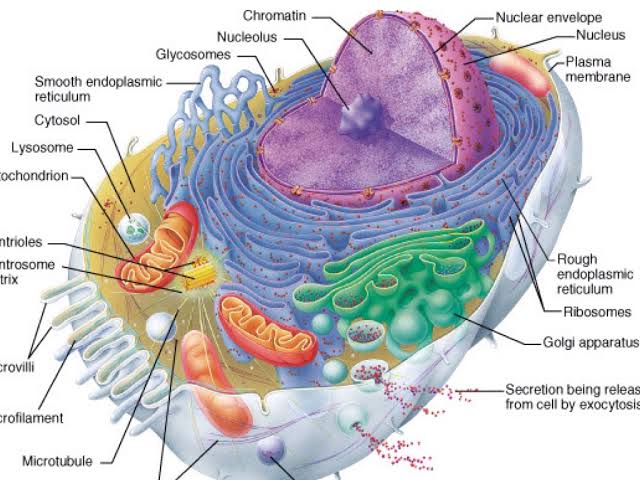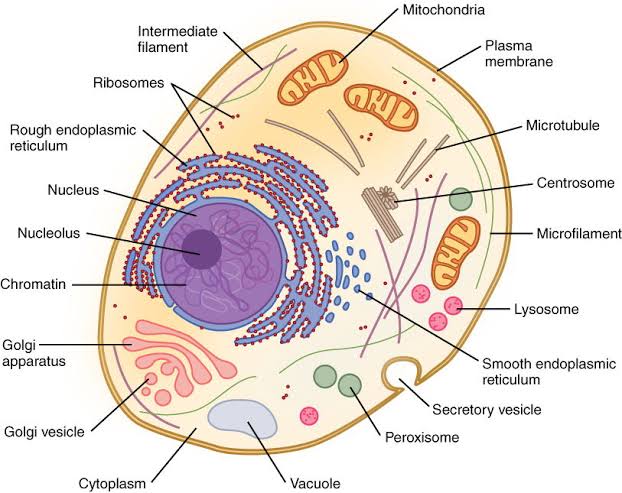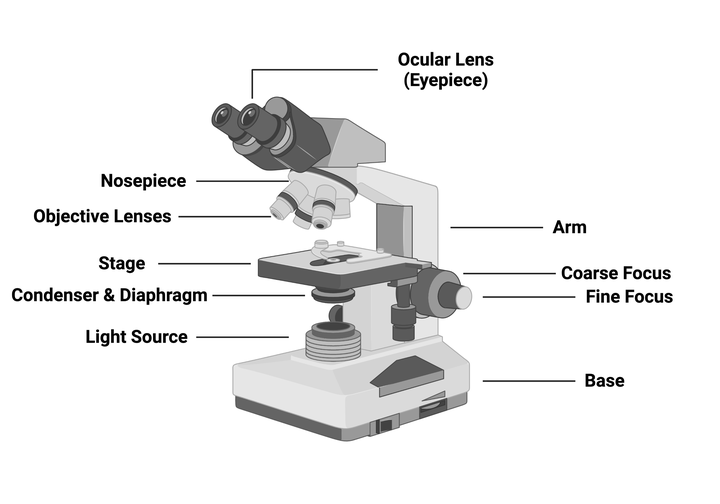
Definition of Fat Tissue
Fat tissue, also known as adipose tissue, is a type of loose connective tissue primarily composed of adipocytes (fat cells). It serves several critical functions in the body, including energy storage, insulation, and cushioning of organs. Adipose tissue is not merely a passive storage depot for fat; it actively participates in metabolic processes and communicates with other organs through hormone signaling.
Types of Fat Tissue
Adipose tissue can be classified into two main types: white adipose tissue (WAT) and brown adipose tissue (BAT).
White Adipose Tissue (WAT)
- Structure: WAT is the most abundant form of adipose tissue in the human body. It consists mainly of large adipocytes that contain a single lipid droplet surrounded by a thin layer of cytoplasm. This structure allows for efficient storage of energy.
- Functions: The primary role of WAT is to store energy in the form of triglycerides. Additionally, it provides insulation to help regulate body temperature and acts as a cushion to protect internal organs from mechanical shock. WAT also secretes various hormones, such as leptin, which regulates appetite and metabolism.
- Location: WAT is found throughout the body, particularly beneath the skin (subcutaneous fat), around internal organs (visceral fat), and within bone marrow.
Brown Adipose Tissue (BAT)
- Structure: BAT contains smaller adipocytes compared to WAT and has multiple lipid droplets within each cell. It is richly supplied with blood vessels and contains many mitochondria, which give it its brown color due to iron content.
- Functions: The primary function of BAT is thermogenesis—generating heat through a process called non-shivering thermogenesis. This process helps maintain body temperature in cold environments, especially in infants who have higher amounts of brown fat.
- Location: In humans, BAT is primarily located in areas such as the upper back, around the neck, above the clavicles, and along the spine. Its presence decreases with age.
In summary, fat tissue plays an essential role in energy metabolism and overall health. The two types—white adipose tissue for energy storage and brown adipose tissue for heat generation—highlight the diverse functions that this connective tissue performs within the body.
Components of Fat Tissue
Each type has distinct components and functions.
1. White Adipose Tissue (WAT)
White adipose tissue is the most abundant form of fat in the body and serves multiple essential functions:
- Adipocytes: The primary cells in WAT are adipocytes, which are specialized for storing energy in the form of triglycerides. These cells have a simple structure, typically containing a single large lipid droplet surrounded by a thin layer of cytoplasm. This design allows for efficient storage and mobilization of energy.
- Stromal Vascular Fraction (SVF): In addition to adipocytes, WAT contains various other cell types within the stromal vascular fraction. This includes pre-adipocytes, endothelial cells, immune cells (such as macrophages), and fibroblasts. These cells play crucial roles in regulating metabolism, inflammation, and overall energy balance.
- Hormones: WAT is an active endocrine organ that secretes hormones such as leptin (which regulates hunger and energy expenditure), adiponectin (which enhances insulin sensitivity), and resistin (which may contribute to insulin resistance). These hormonal signals help communicate with other organs and systems to maintain metabolic homeostasis.
2. Brown Adipose Tissue (BAT)
Brown adipose tissue is less prevalent than white fat but has unique characteristics:
- Brown Adipocytes: The cells in BAT are more complex than those in WAT. They contain multiple small lipid droplets rather than one large droplet, along with numerous mitochondria rich in iron, which gives them their characteristic brown color.
- Thermogenesis: The primary function of BAT is thermogenesis — generating heat through a process called non-shivering thermogenesis. This process is particularly important for newborns to maintain body temperature but also plays a role in adults during cold exposure or caloric excess.
- UCP1 Protein: Brown adipocytes express uncoupling protein 1 (UCP1), which allows for the dissipation of energy as heat instead of storing it as ATP. This mechanism helps regulate body temperature and energy expenditure.
3. Composition of Fatty Acids
The composition of fatty acids within both types of adipose tissue can influence health outcomes:
- Saturated Fatty Acids: These fats are typically solid at room temperature and can contribute to various health issues when consumed excessively.
- Monounsaturated Fatty Acids: Found in foods like olive oil, these fats are considered healthier options that may improve heart health.
- Polyunsaturated Fatty Acids: Including omega-3 and omega-6 fatty acids, these fats are essential for various bodily functions but must be consumed through diet.
Research indicates that the balance between different types of fatty acids stored in adipose tissue may affect susceptibility to metabolic disorders such as obesity, type 2 diabetes, and cardiovascular diseases.
In summary, fat tissue comprises various components including specialized cells (adipocytes), supporting cell types within SVF, hormones that regulate metabolism, and distinct fatty acid compositions that influence health outcomes.
Comparison of Histological Features of White and Brown Fat Tissues
1. General Structure
White adipose tissue (WAT) and brown adipose tissue (BAT) have distinct histological features that reflect their different functions in the body.
- White Adipose Tissue: WAT is characterized by large, unilocular adipocytes, which contain a single large lipid droplet that occupies most of the cell’s volume. This structure leads to a flattened nucleus located at the periphery of the cell. The cytoplasm appears scant due to the dominance of the lipid droplet. WAT is organized into lobules separated by connective tissue, and it contains fewer blood vessels compared to BAT.
- Brown Adipose Tissue: In contrast, BAT consists of smaller, multilocular adipocytes that contain multiple small lipid droplets dispersed throughout the cytoplasm. This gives BAT a more granular appearance under the microscope. The nuclei in brown fat cells are centrally located and round. Additionally, BAT has a rich vascular network and a higher density of mitochondria, which are essential for its thermogenic function.
2. Mitochondrial Density
- White Adipose Tissue: Mitochondria in WAT are fewer in number and less active compared to those in BAT. The primary role of WAT is energy storage rather than energy expenditure.
- Brown Adipose Tissue: BAT is distinguished by its high mitochondrial density, which contains uncoupling protein 1 (UCP1). UCP1 plays a crucial role in non-shivering thermogenesis by dissipating energy as heat instead of storing it as ATP.
3. Vascularization
- White Adipose Tissue: WAT has a relatively lower vascular supply, which reflects its primary function as an energy reservoir rather than an active metabolic tissue.
- Brown Adipose Tissue: BAT is highly vascularized, allowing for efficient heat distribution throughout the body during cold exposure or hibernation periods.
4. Functionality Indicators
- White Adipose Tissue: Histologically, WAT may show signs of hypertrophy or hyperplasia depending on nutritional status and metabolic needs but lacks significant indicators for thermogenic activity.
- Brown Adipose Tissue: The presence of numerous mitochondria and multilocular lipid droplets indicates its specialized role in heat production and energy expenditure.
In summary, while both white and brown adipose tissues serve important roles in metabolism and energy balance within the body, their histological differences—such as cell morphology, mitochondrial content, vascularization, and structural organization—reflect their distinct physiological functions: energy storage for white fat versus thermogenesis for brown fat.
Correlation Between Location and Function of White and Brown Adipose Tissue
1. Location of White Adipose Tissue (WAT)
White adipose tissue is the most abundant type of fat in the human body. It is primarily located in several key areas:
- Subcutaneous Fat: This is found directly under the skin and constitutes a significant portion of body fat.
- Visceral Fat: This type surrounds internal organs, such as the liver, pancreas, and intestines, providing cushioning and protection.
- Bone Marrow Fat: Present within the cavities of bones, this fat plays a role in energy storage.
2. Function of White Adipose Tissue (WAT)
The primary functions of white adipose tissue include:
- Energy Storage: WAT stores excess energy in the form of lipids, which can be mobilized when needed.
- Insulation: It provides thermal insulation to help maintain body temperature.
- Cushioning: WAT acts as a protective cushion around vital organs.
- Hormonal Regulation: WAT secretes hormones such as leptin, which regulates hunger and satiety signals, and other substances that influence metabolism and inflammatory responses.
3. Location of Brown Adipose Tissue (BAT)
Brown adipose tissue is less prevalent than white fat and is primarily located in:
- Upper Back: Concentrated around the shoulder blades and upper spine.
- Above Clavicles: Found near the collarbone area.
- Around Vertebrae: Located along the spinal column.
4. Function of Brown Adipose Tissue (BAT)
The main functions of brown adipose tissue include:
- Thermogenesis: BAT generates heat through a process known as non-shivering thermogenesis, which is particularly important for maintaining body temperature in infants.
- Energy Expenditure: Unlike white fat, which stores energy, brown fat burns calories to produce heat, thus playing a role in regulating overall energy balance.
5. Summary of Correlation Between Location and Function
The correlation between the location and function of both types of adipose tissue can be summarized as follows:
- White adipose tissue’s widespread distribution throughout the body allows it to effectively store energy, provide insulation, cushion organs, and regulate metabolic processes via hormone secretion. Its presence beneath the skin (subcutaneous) and around organs (visceral) highlights its roles in both energy storage and protection.
- In contrast, brown adipose tissue’s specific locations—primarily in areas like the upper back—are strategically suited for its unique function of thermogenesis. The concentration of mitochondria within brown fat cells enables them to convert stored energy into heat efficiently.
In conclusion, while both types serve essential roles in metabolism and overall health, their distinct locations reflect their specialized functions: white adipose tissue focuses on energy storage and metabolic regulation, whereas brown adipose tissue emphasizes heat production and energy expenditure.
Correlating Fat Tissue and Disorders Associated with Obesity
Introduction to Obesity and Fat Tissue
Obesity is defined as having a body mass index (BMI) of 30 kg/m² or greater. It is increasingly recognized as a significant global health issue, contributing to various metabolic and cardiovascular disorders. The relationship between fat tissue, particularly its quantity and quality, and the development of obesity-related disorders is complex and multifaceted.
Adipose Tissue Dysfunction
Adipose tissue serves not only as an energy reservoir but also plays a crucial role in endocrine functions by secreting bioactive substances known as adipokines. In individuals with obesity, there is a marked dysfunction in adipose tissue characterized by an imbalance in the secretion of these adipokines. This dysfunction leads to a chronic low-grade inflammatory state that has been linked to several disorders:
- Cardiovascular Diseases (CVD): The inflammatory mediators released from dysfunctional adipose tissue contribute significantly to the pathogenesis of cardiovascular diseases such as atherosclerosis and ischemic heart disease. Increased levels of pro-inflammatory adipokines like IL-6 and TNF-α are associated with endothelial dysfunction, which can lead to increased arterial stiffness and plaque formation.
- Type 2 Diabetes Mellitus (T2DM): Obesity is closely associated with insulin resistance, which is exacerbated by the inflammatory state induced by dysfunctional adipose tissue. Adipokines such as resistin promote insulin resistance, while others like adiponectin (which has anti-inflammatory properties) are downregulated in obesity.
- Non-Alcoholic Fatty Liver Disease (NAFLD): Excess visceral fat accumulation contributes to liver inflammation and steatosis, leading to NAFLD. The release of free fatty acids from visceral fat can overwhelm the liver’s capacity for lipid metabolism, resulting in fat accumulation within hepatocytes.
- Certain Cancers: There is growing evidence linking obesity with an increased risk of various cancers, including breast, colorectal, and endometrial cancers. The chronic inflammation associated with excess adipose tissue may create a microenvironment conducive to tumorigenesis through mechanisms involving insulin resistance and altered hormone levels.
- Immune Disorders: The inflammatory cytokines secreted by adipose tissue can impair immune function, leading to increased susceptibility to infections and autoimmune diseases.
Quality vs Quantity of Adipose Tissue
Recent studies emphasize that not just the quantity but also the quality of fat tissue plays a critical role in determining health outcomes related to obesity. Visceral fat—fat stored around internal organs—is more metabolically active than subcutaneous fat (fat stored beneath the skin) and is more strongly associated with adverse health effects:
- Visceral Fat: This type of fat exhibits higher levels of pro-inflammatory cytokine production compared to subcutaneous fat. It has been shown that individuals with higher visceral fat have an increased risk for cardiometabolic diseases regardless of overall body weight.
- Subcutaneous Fat: While it still contributes to overall body fat percentage, subcutaneous fat may have protective effects against metabolic dysfunction when compared to visceral fat.
Conclusion
The correlation between fat tissue—particularly its dysfunction—and various disorders associated with obesity underscores the importance of addressing both the quantity and quality of adipose tissue in managing obesity-related health risks. Understanding these relationships can help inform strategies for prevention and treatment aimed at reducing the burden of obesity-related diseases.







